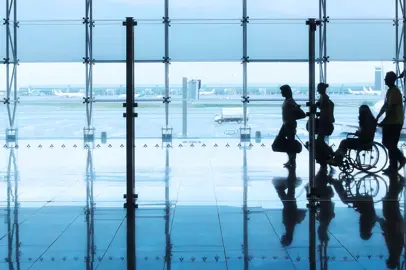Airport infrastructures and air transport development: the focus of CESISP at Bicocca and the contribution of ENAC
Airport infrastructure as a driver of air transport development,
of public finance and the competitiveness of the Italian system.
This is the theme at the center of the conference "Airport infrastructures and the development of air transport", held on November 17, 2025 at the Martinotti Auditorium (Building U12) of the University of Milan-Bicocca, as part of the Public Finance Course organized by CESISP - Center for Studies in Economics and Regulation of Services, Industry and the Public Sector.
The study framework: infrastructure, public finance and competitiveness
The day of work started from the crucial role that infrastructures play in the transport sector and, in particular, in the aeronautical sector. From the point of view of public finance, investments in airports are intertwined with the revenue generated by market development, tourist presences and the contribution to the competitiveness of the country, themes at the center of the research activity of CESISP and the Department of Economic-Business Sciences and Law for Economics (Di.SEA.DE).
In the session dedicated to academic relations, professors Andrea Giuricin and Ugo Arrigo explored two central guidelines of the study:
- the development of airport infrastructure and global competition between continental megahubs, with particular attention to the airports' ability to attract traffic and investment;
- the development of air transport in Italy after liberalisation and the obstacles to growth, in the light of the new European competitive and regulatory context.
The conference is part of the CESISP analysis strand dedicated to regulated markets and public services, with a specific focus on the Italian airport system and its positioning in the European framework.
Institutional interventions:
Regulation and system capacity
After the introduction by the Secretary of CESISP, Giacomo Di Foggia, the institutional session saw the interventions of:
- Nicola Zaccheo, President of the Transport Regulation Authority (ART);
- Alexander D'Orsogna, Director General of ENAC – Italian Civil Aviation Authority.
In his speech, the Director General Alexander D'Orsogna recalled the significant volumes of national air traffic, which with an annual increase of 5% are close to reaching about 230 million passengers for the current year. A growth that identifies an expanding sector, but which requires to be accompanied by strategic and long-term planning.
D'Orsogna recalled how ENAC, in line with its institutional mission, accompanies the development of air transport with a view to sustainable development, enhancing the infrastructural capacity of the Italian airport system.
A system that combines large hubs and major airport systems with a widespread network of small airports distributed throughout the country.
These different realities give rise to heterogeneous business models which, if included in a forward-looking governance, can generate growing opportunities for the territories and contribute to strengthening the competitiveness of a real "Italian model" in air transport.

The panel with operators and airlines
The final part of the day was dedicated to a panel discussion between institutions, airport managers and air carriers, with the participation of:
- Marco Troncone, CEO of Aeroporti di Roma;
- Amelia Corti, General Manager of Milan Bergamo Airport;
- Francesco Presicce, Chief Strategic Projects, Vision & Innovation ITA Airways;
- Roberto Ioriatti, Senior Vice President International Pricing & Revenue Management Delta Air Lines;
- Gaetano Intrieri, CEO and founder of Aeroitalia.
The debate highlighted the need for an integrated vision of the airport network, capable of bringing together large hubs and regional airports, focusing on intermodality, digitalisation and environmental sustainability as guiding principles of infrastructure policies.
The Bicocca conference, born in the academic field, thus confirms itself as a place of synthesis between economic research, regulation and industrial strategies, with a particular focus on the role of airport infrastructures in the future of Italian and European air transport.






